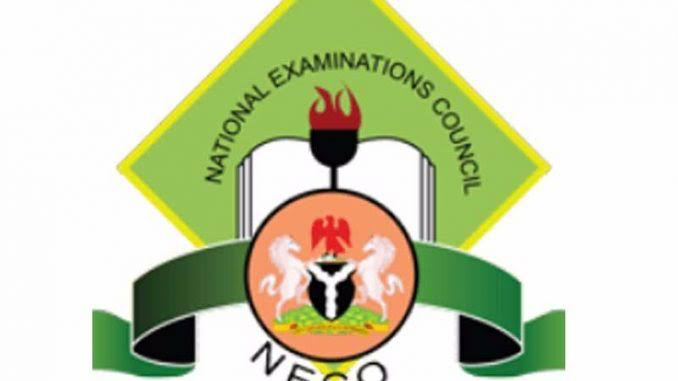
WAEC FISHERIES | FISHERIES RUNS | FISHERIES QUESTIONS & ANSWERS | 2024 FISHERIES ANSWERS | SURE FISHERIES ANSWERS | HOW TO PASS WAEC FISHERIES | FISHERIES OBJ | FISHERIES 2024 ESSAY
FISHERIES OBJ
01-10:ABDBBCBDDA
11-20:BCCCDC
21-30:
31-40:
SEE THIS; WAEC 2023 Results Testimonies By Gidiclass – Click Here
FISHERY.
(1a)
(i) Fishing Gear: Tools for fishing like rods, nets, and lures.
(ii) Fishing Craft: Boats used for fishing activities.
(1b)
(i) Partial Harvesting: This involves selectively harvesting mature fish from the pond while leaving some behind to continue growing. It allows for continuous production over time.
(ii) Complete Harvesting: In this method, all the fish in the pond are harvested at once. After harvesting, the pond is usually drained, cleaned, and restocked with new fish.
(1c)
(i) Select Broodstock: Pick healthy, mature fish.
(ii) Administer Hormones: Stimulate spawning.
(iii) Collect Eggs and Sperm: From selected fish.
(iv) Fertilize Eggs: Combine eggs and sperm.
(v) Incubate: Hatch eggs in controlled conditions.
(vi) Manage Hatchery: Care for larvae until mature.
(1d)
(i) Appearance: Males and females look different.
(ii) Reproductive Organs: Females have ovaries, males have testes.
(iii) Secondary Traits: Males may have distinct markings or features during breeding.
(4a)
(PICK ANY THREE)
(i) Maintaining optimal water parameters, such as temperature, pH, dissolved oxygen, and ammonia levels, is crucial for the survival and healthy growth of fish seed.
(ii) Providing the right type, quantity, and frequency of feed to the fish seed ensures they receive adequate nutrition for growth and development.
(iii) Monitoring for and promptly addressing any signs of disease or parasitic infections, and implementing appropriate treatment measures, helps maintain the health and survival of the fish seed.
(iv) Protecting the fish seed from predators, such as birds, larger fish, or other animals, through the use of physical barriers or deterrents, helps ensure their survival.
(4b)
(PICK ANY FOUR)
(i) Outboard motorboat
(ii) Inboard motorboat
(iii) Sailboat
(iv) Canoe
(v) Rowboat
(vi) Trawler
(4c)
(i) Site selection: Choose a suitable location for the fish pond, considering factors like water source, soil type, and accessibility.
(ii) Pond construction: Excavate the pond, shape it, and install necessary infrastructure like inlet and outlet channels.
(iii) Water management: Fill the pond with water and maintain the desired water level and quality.
(4d)
(PICK ANY FOUR)
(i) Aerators
(ii) Water test kits
(iii) Weighing scales
(iv) Nets
(v) Liming materials
(vi) Fertilizers
(5ai)
(PICK FOUR)
(I)Topography
(II) Soil Quality
(III) Water Supply
(IV) Drainage
(V)Accessibility
(VI) Environmental Factors
(5aii)
(PICK FOUR)
(I) – Reason: A level or gently sloping terrain reduces the need for extensive excavation and earthmoving, saving time and money during construction.
(II) – Reason: Soil with high clay content retains water better, reducing the risk of seepage and maintaining adequate water levels in the pond.
(III) – Reason: A steady water supply ensures consistent water levels and optimal conditions for fish health and growth.
(IV) – Reason: Good drainage prevents waterlogging of the soil and minimizes the risk of disease outbreaks among the fish population.
(V) – Reason: Easy access facilitates regular maintenance tasks such as feeding, water quality testing, and harvesting, improving overall efficiency and productivity.
(VI) – Reason: Compliance with regulations and consideration of environmental factors help mitigate negative impacts on local ecosystems and communities, promoting sustainable fish farming practices.
(5b)
(i) Gills:
Fresh fish: Bright red or pink gills
Spoiled fish: Dull, discolored gills, possibly with slime
(ii) Skin:
Fresh fish: Smooth, shiny skin
Spoiled fish: Slimy, dull skin with discoloration or patches
(iii) Muscle:
Fresh fish: Firm, elastic flesh
Spoiled fish: Soft, mushy flesh with a strong odor
(iv) Eyes:
Fresh fish: Clear, bright eyes
Spoiled fish: Cloudy, sunken eyes
(v) Belly:
Fresh fish: Firm, intact belly
Spoiled fish: Swollen, bloated belly with possible discoloration or unpleasant odor
(5c)
(PICK 5)
(i) Keep fish refrigerated or on ice.
(ii) Clean fish thoroughly after catching.
(iii) Store fish in airtight containers or vacuum-sealed bags.
(iv) Use appropriate packaging materials to prevent oxidation and dehydration.
(v) Maintain proper hygiene during handling and processing.
(vi) Monitor temperature and humidity levels during storage and transportation.
(vii) Use preservatives like salt or brine to inhibit bacterial growth.
(5d) in fisheries, by-catch is often utilized for various purposes such as fishmeal production, animal feed, fertilizer, or in some cases, it may be discarded back into the sea with measures taken to minimize environmental impact.
(6a)
(i) Float: Keeps the top of the net buoyant, preventing it from sinking.
(ii) Sinker: Helps the net sink to the desired depth underwater.
(iii) Netting: Forms the main body of the net, capturing fish as they swim into it.
(iv) Float rope: Attaches the floats to the top of the net, aiding in keeping it afloat and visible.
(v) Head rope: Secures the top of the net and provides stability during deployment and retrieval.
(6b)
(i) Trawler
(ii) Longliner
(iii) Purse seiner
(iv) Gillnetter
(v) Drift netter
(6c) Making a fish pond involves several steps. Firstly, select a suitable site with access to water and good drainage. Excavate the area to the desired shape and depth, ensuring proper water circulation. Line the pond with a waterproof material like clay or synthetic liners to prevent water seepage. Fill the pond with water and stock it with fish species suited to the environment. Lastly, manage the pond by monitoring water quality, feeding the fish, and controlling pests and predators.
(6d)
(ii) Aeration systems: Such as aerators or air diffusers to maintain oxygen levels in the water.
(ii) Pond liners: To prevent water seepage and maintain water levels.
(iii) Fish feed: Pellets or formulated feed to provide proper nutrition to the fish.
(iv) Nets and traps: For harvesting fish or controlling unwanted species within the pond.
SEE THIS; WAEC 2023 Results Testimonies By Gidiclass – Click Here




Leave a Reply